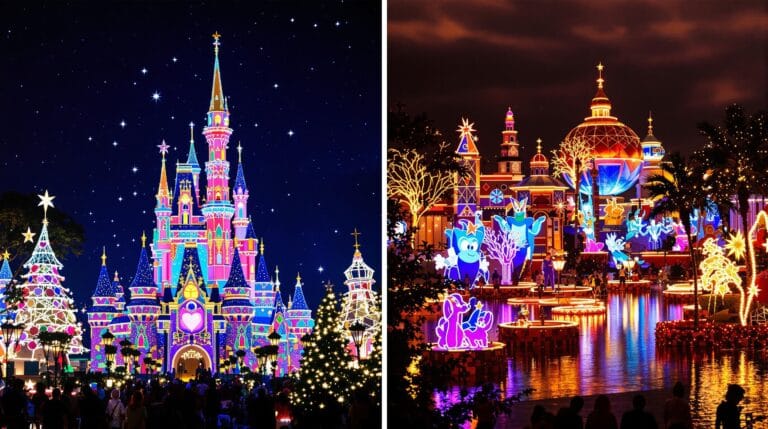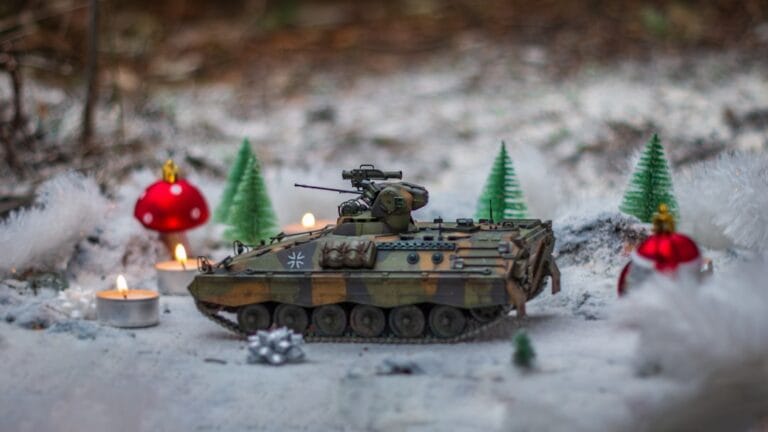Did you know Santa Claus started as a real person? St. Nicholas of Myra, a 4th-century Christian bishop from modern-day Turkey, was known for his generosity and secret gift-giving. Over 1,700 years, his story evolved into the cheerful Santa we know today.
Here’s a quick overview of St. Nicholas’s journey to becoming Santa Claus:
- Historical Roots: St. Nicholas was a bishop famous for helping the poor and protecting children.
- Key Traditions: Stories like leaving gold in stockings inspired modern customs.
- Cultural Evolution: Dutch settlers brought “Sinterklaas” to America, shaping Santa’s image.
- Modern Santa: Clement Clarke Moore’s poem and Coca-Cola ads solidified today’s red-suited figure.
- Global Names: From Père Noël in France to Ded Moroz in Eastern Europe, St. Nicholas has many versions worldwide.
Learn how this kind-hearted bishop became a global symbol of generosity and holiday cheer!
How Did Saint Nicholas become Santa Claus?
1. St. Nicholas: The 4th Century Bishop Who Inspired Santa
Nicholas was born around 270 AD in Patara, Turkey, into a wealthy family. Instead of embracing a life of luxury, he chose one of service and devotion, which eventually led him to become the Bishop of Myra (now Demre, Turkey). Known for his deep faith and generosity, Nicholas stood firm in his beliefs even during the Great Persecution under Roman Emperor Diocletian (303–311 AD), enduring imprisonment rather than renouncing his Christianity.
After being released under Emperor Constantine, Nicholas participated in the 325 Council of Nicaea. According to legend, he was so passionate about defending Christ’s divinity that he struck another attendee who questioned it.
Nicholas’s faith was matched by his quiet acts of kindness. He helped the poor, protected children, and provided dowries for women in need – all anonymously. Unlike others who sought recognition for their charity, Nicholas preferred to give in secret, which only added to his lasting reputation for generosity.
After his death on December 6, 343 AD, his legacy grew. Many European countries began celebrating St. Nicholas Day by leaving small gifts in shoes or stockings. His remains, originally buried in Myra, were moved to Bari, Italy, in 1087, where they now rest in the Basilica di San Nicola. Over time, his story became intertwined with modern Christmas traditions, including hanging stockings and the idea of a figure who rewards well-behaved children.
2. St. Nicholas’s Most Famous Good Deeds
St. Nicholas’s acts of kindness and generosity laid the foundation for many holiday traditions we know today. One well-known story tells of how he secretly helped a struggling family in 4th-century Myra by providing dowries for their three daughters. To do this, he discreetly placed gold in their stockings, allowing the daughters to marry and avoid a life of hardship. This quiet, thoughtful gesture became a hallmark of his charitable nature.
Another story highlights how he gave secret gifts to children in need, creating an early version of today’s custom of rewarding good behavior. These stories reveal important aspects of his character:
- Anonymous generosity: He gave without expecting recognition.
- Support for the vulnerable: His efforts focused on helping those in difficult circumstances.
- Practical help: His gifts addressed immediate needs.
These enduring tales link the historical St. Nicholas to the Christmas traditions that continue to bring joy today.
3. From Sinterklaas to American Santa
St. Nicholas’s legacy of giving made its way across the Atlantic, influencing new traditions along the way. Dutch settlers in 17th-century New Amsterdam (now New York City) brought Sinterklaas with them, sharing their customs and setting the stage for the transformation of Sinterklaas into what we now recognize as the American Santa Claus.
sbb-itb-df5c804
4. Santa’s Changes Through History
Santa’s transformation from the solemn Sinterklaas to the cheerful figure we know today took centuries. Clement Clarke Moore’s 1823 poem, "A Visit from St. Nicholas", introduced a "jolly old elf" with a round belly and rosy cheeks, marking a shift from the more serious image of Sinterklaas. This portrayal laid the groundwork for the Santa we recognize now.
In the 1860s, Thomas Nast, a political cartoonist, further shaped Santa’s look through illustrations in Harper’s Weekly. Nast’s drawings gave Santa his signature features: a white beard, red suit trimmed with white fur, a wide black belt, sturdy black boots, and even the concept of a North Pole workshop. These details blended St. Nicholas’s charitable roots with a more modern, festive image.
Haddon Sundblom’s illustrations for Coca-Cola’s Christmas ads in 1931 solidified Santa’s current appearance. Sundblom’s version showcased a warm, grandfatherly face, a bright red suit, and a hearty, robust build. As Christmas became more commercialized, Santa’s image was reinforced through movies, department store events, and other media, with subtle tweaks to resonate with each new generation.
5. Names for St. Nicholas Worldwide
St. Nicholas goes by many names and is celebrated in unique ways around the world. In the Netherlands, he is known as Sinterklaas, depicted as a bishop wearing a robe and miter, riding a white horse. This Dutch tradition heavily influenced the American version of Santa Claus.
In Germany, Nikolaus is celebrated on December 6, when children leave out shoes or stockings to be filled with treats. Over time, the Weihnachtsmann also became a figure associated with Christmas gift-giving.
In France, Père Noël, or Father Christmas, delivers presents during the holiday season.
Scandinavian countries have their own versions of St. Nicholas. In Sweden, children look forward to Jultomten, a gnome-like character connected to the Julbock (a Christmas goat). Meanwhile, in Norway and Denmark, the Julenissen, a playful Christmas elf, takes on the role of gift-giver.
In Eastern Europe, Ded Moroz (Grandfather Frost) and his granddaughter Snegurochka (the Snow Maiden) bring joy to children during New Year’s festivities.
In Italy, Babbo Natale is the modern name for Santa Claus, though in places like Bari, St. Nicholas is still honored as San Nicola, reflecting his historical roots.
In Britain, Father Christmas was originally depicted in green robes as a symbol of festive cheer. Over time, his image merged with the red-suited Santa Claus we know today.
While the names and traditions vary, the spirit of generosity and celebration tied to St. Nicholas continues to unite cultures during the holiday season.
6. St. Nicholas as a Patron Saint
St. Nicholas is known not only for influencing the modern image of Santa Claus but also for his role as a patron saint. He is celebrated as a protector of children, sailors, and merchants. His enduring reputation for kindness and generosity continues to inspire acts of charity around the world, making him a meaningful figure beyond holiday traditions and within various communities and professions.
7. Test Your St. Nicholas Knowledge
Dive into the fascinating history of St. Nicholas with these thought-provoking questions:
- In what century did St. Nicholas live, and where was he a bishop?
- Who considers St. Nicholas their patron saint?
- How did the Dutch name "Sinterklaas" shape the modern "Santa Claus"?
- What legendary acts of kindness earned St. Nicholas his reputation as a gift-giver?
Looking to add some fun to your holiday gatherings? Trivia About Christmas offers ready-made trivia packs featuring over 40 questions. Perfect for family get-togethers, community events, or virtual celebrations, each pack includes:
- Three rounds of classic Q&A-style trivia
- An engaging picture round
- Professionally designed materials
- Instant digital access
Use St. Nicholas trivia to spark engaging discussions that connect the traditions of the past with today’s holiday festivities.
Conclusion
St. Nicholas has transformed from a dedicated bishop into the beloved figure of Santa Claus, shaping the holiday traditions we know today.
His legacy of kindness and giving is celebrated in various ways worldwide, from the Dutch Sinterklaas to the modern Santa. These values continue to inspire and connect people across cultures. Understanding his story adds a richer perspective to the traditions we enjoy during the holidays.
This season, consider honoring his legacy with these ideas:
- Explore local heritage centers to discover regional Santa traditions.
- Celebrate St. Nicholas Day on December 6 with family and friends.
- Share traditional St. Nicholas stories during holiday gatherings.
- Use holiday trivia to spark conversations about different cultural celebrations.






